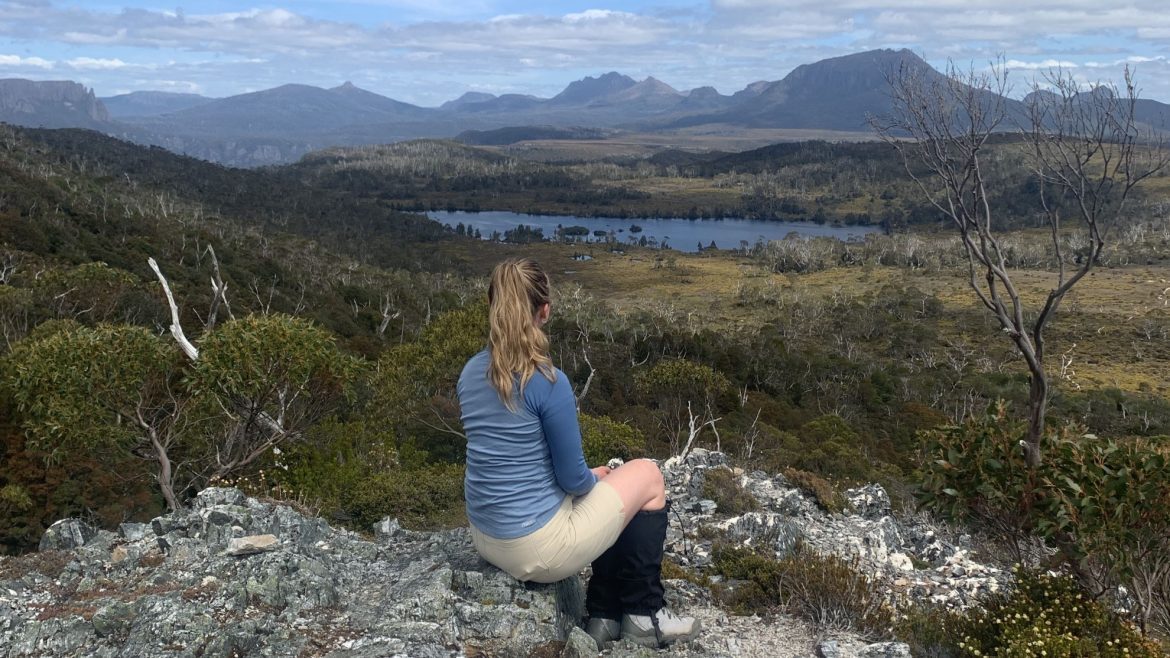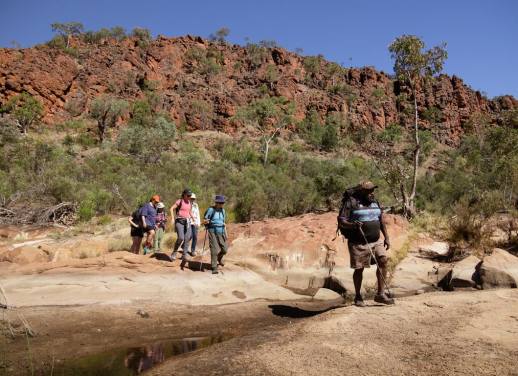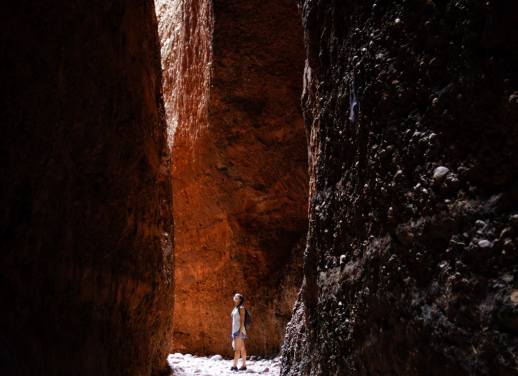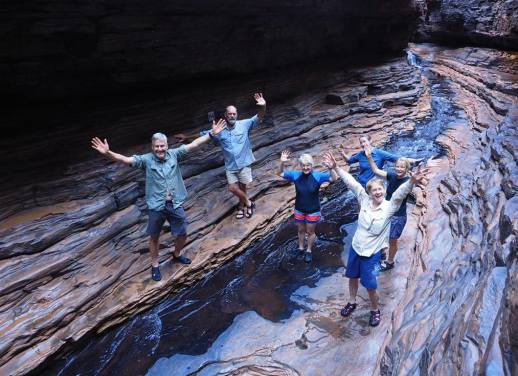If you’re gearing up for this trail, or considering an adventure in Tasmania’s UNESCO-listed wilderness, this first-timer’s experience of the Overland Track will give you some valuable insights on what to expect and tips on how to handle it.
‘Are you going anywhere exciting?’ The outdoor gear shop assistant asked as I paid for some hiking socks and gaiters. With my trip only days away, this was one of the last things left to do.
‘The Overland Track in Tassie,’ I replied.
He smiled knowingly. ‘Are you emotionally ready for it?’
‘As ready as I’ll ever be!’ I laughed, hoping the butterflies of nerves and excitement wouldn’t fly out of my mouth. I didn’t know what he meant by emotional readiness – I was too busy worrying about whether I was physically ready for a six–day trek.
I’ve been on plenty of day hikes, but the only multi-day trek I’ve done is Mt Rinjani in Lombok, Indonesia. We walked about 36 kilometres in three days – the summit stands at 3726 metres and the trail is very steep due to the quick elevation gain. It’s quite tough on the legs, especially on the final approach to the summit, where the sandy terrain makes you slide backwards after each step.
We also had three local guides and porters with us who carried our tents, cooking equipment and food supplies, so all I had to bring was a day pack with a change of clothes.
The Cradle Mountain Overland Track wouldn’t be like that. For starters, there are no porters, so I’d be lugging my own rucksack and supplies.
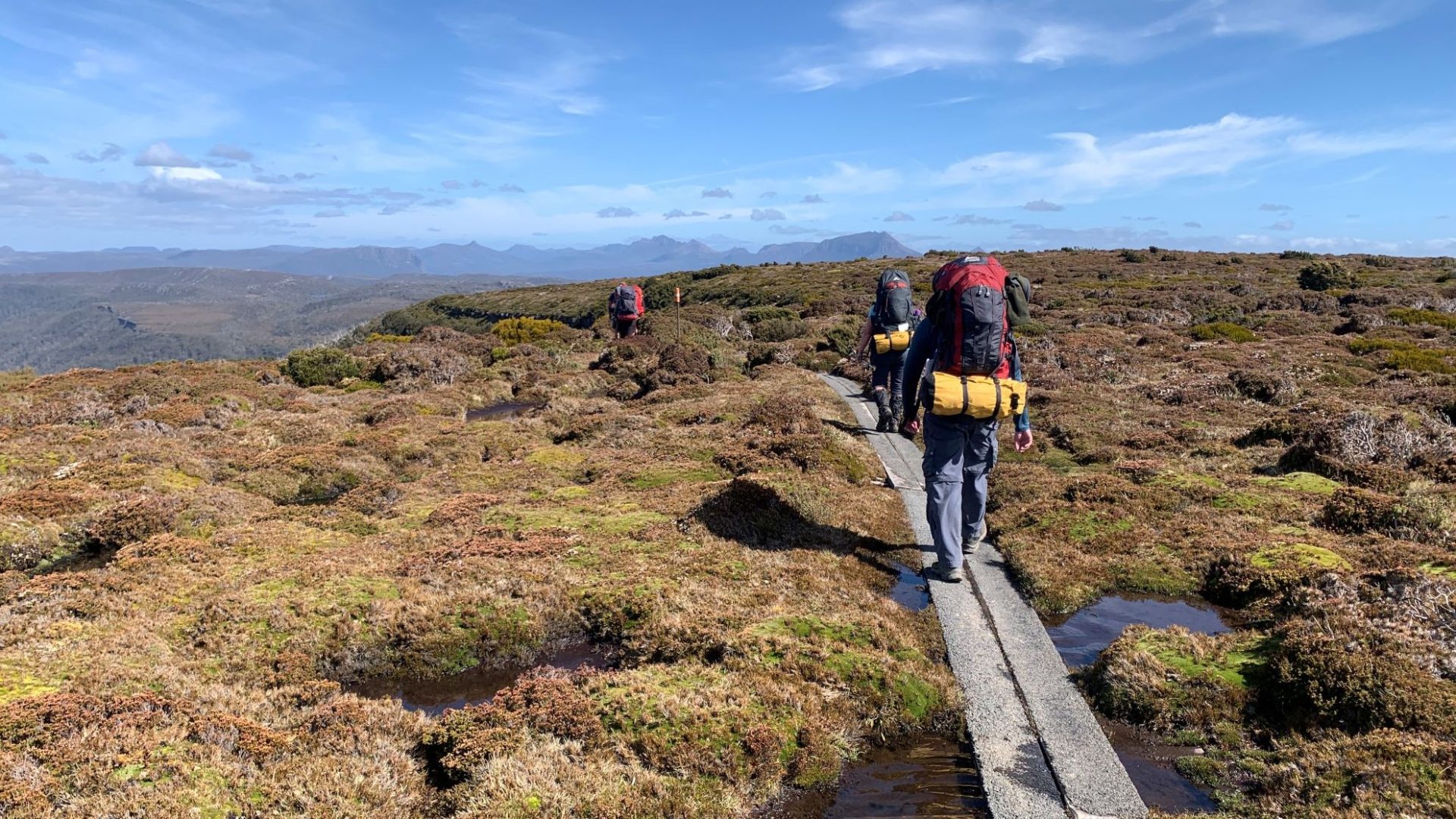
To prep for this trip, I did some research to suss others’ experiences and gauge what kind of hiking gear to bring. After trawling through lots of comments, it was clear that this trek is a serious undertaking, and that it’s not for the unprepared. I felt reassured knowing I’d be with two Intrepid leaders, but I was still nervous because I didn’t have much trekking experience.
The Overland Track is a grade 4 hike – typically more challenging and suited to people with experience – spanning 65 kilometres through the heart of Cradle Mountain-Lake St Clair National Park in the Central Highlands of Tasmania. Trekkers spend an average of six days (some take longer adding additional routes) walking through an ever-changing landscape of sprawling moorlands, glacial valleys, mossy forests and alpine meadows. For most of that time you’re cut off from the outside world with no phone signal or creature comforts – we set up tents every night and slept under the stars.
Here’s the lowdown on what you can expect on the Overland Track with Intrepid. Rest assured you’ll be taken care of, novice trekkers.
1. Train for the trek with cardio and strength training
I had a good baseline fitness, but for the months leading up to the trip I upped my cardio, did extra strength training and went on more day hikes. Carrying a pack was undoubtedly the toughest part of the trek for me, and in hindsight, I should have done a few hikes wearing a pack with the same weight I intended to carry. I know for next time.
The beginning of the trail is predominantly a boardwalk, but as you go deeper into the park, you’ll cover plenty of muddy sections, steep hills and rocky steps. Prep your limbs for the Overland Track’s diverse terrain by walking on the beach, up and down hills, through woodlands or anywhere else that’ll get your muscles used to uneven ground.
A few people in my group brought hiking poles. While my knees were very jealous of them when teetering over slippery tree roots, you may not want to bother if you’re fairly steady on your feet.
2. Use the gear list provided to bring the right stuff
Intrepid provides a comprehensive list of stuff you must pack. They won’t let you hike if you have missing or unsuitable items. Don’t worry, though. At the welcome meeting, before setting off, leaders make sure you have all the correct gear. In case anything is missing, you can always pick it up at the Macpac store in Launceston.
Unless you go trekking regularly, you might be better off renting gear. That way, you’ll have top-quality equipment. Intrepid supplied lightweight trekking tents, but I rented a sleeping bag and liner which kept me super toasty at night. You have to request these with Intrepid before the trip, so make sure you’re organised.
Lucy and Josh, our trekking leaders, also helped us pack our rucksacks to optimise space and ensure we had easy access to our thermals and waterproofs in case the weather turned. Little tips like this made me so grateful that I was with the experts.
3. Carrying a pack can be a challenge
Make peace with the pack, make peace with the pack, make peace with the pack. I had a few mantras for various points in the day, but this one was for when we mounted our rucksacks on our backs each morning.
I knew carrying a 15-kilo rucksack would be hard, but I didn’t realise the full extent of the challenge until I found myself trudging uphill under the midday sun.
I mean it when I say every gram counts. Don’t worry about re-wearing the same clothes and consider whether you really need a book. I didn’t read a single page as I was too busy gushing over the night skies and trying to befriend the local wombats and pademelons.
My shoulders were tender for the first couple of days, but I soon got into the swing of things. In my experience, the more you resist, the greater the struggle. Make peace with the pack.
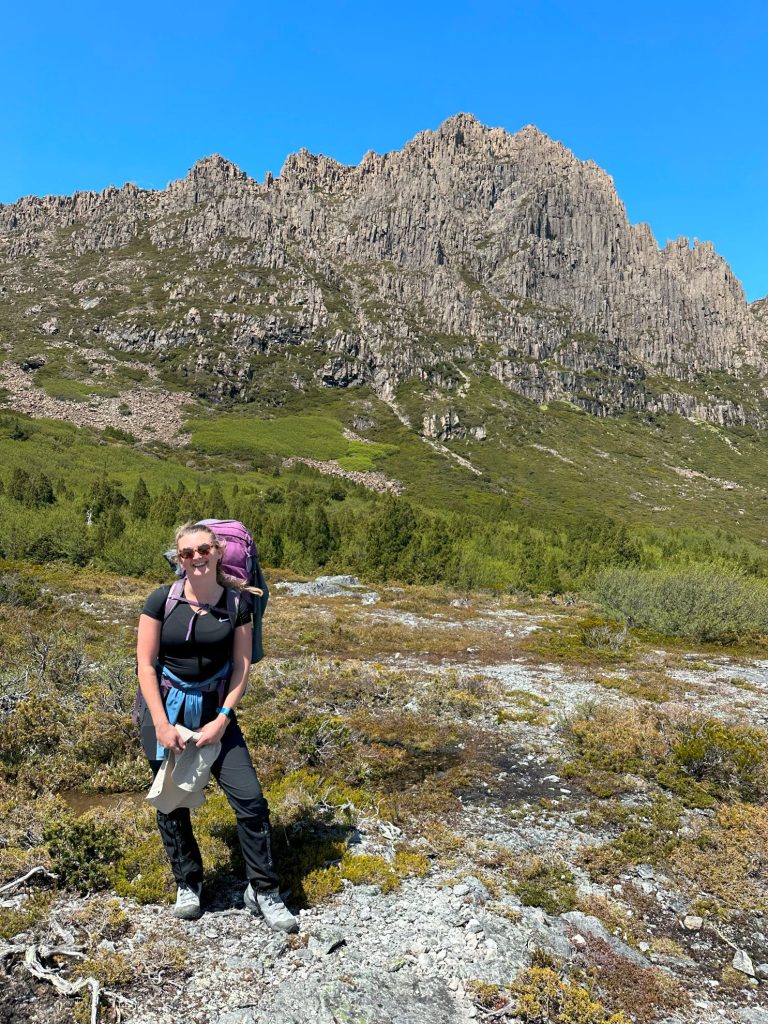
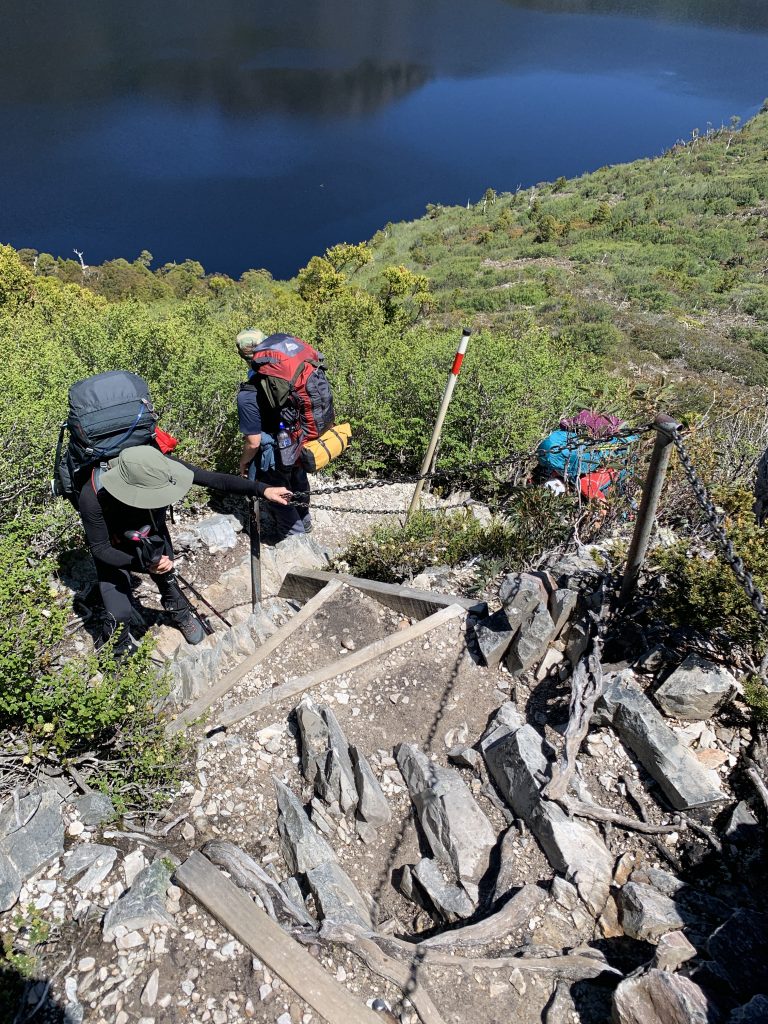
4. Prepare for all types of weather
A large chunk of the Overland Track is above 1000 metres and the weather can change drastically. Forget four seasons in a day. It’s more like four seasons in an hour. The official trekking season is from late spring to early autumn (November to April) when the weather is typically warmest, the days are long and flora is in full bloom.
Trekking outside this period is only recommended for advanced hikers due to cold temperatures and heavy snowfall. That said, it can snow even in summer, so it’s important to pack appropriately.
We were extremely lucky with the weather. Our trip began on 1 December (the first day of summer in Australia) and we had clear skies and sunshine with only a bit of light drizzle towards the end. Our guides said it was some of the best weather they’ve experienced. If it wasn’t for the tiny snowman we encountered at Marion’s Lookout, it would’ve been hard to believe that the trail had been blanketed in snow just a week ago.
5. Be ready to go back to basics
Say goodbye to flushable toilets and showers. There are long-drop loos at the campgrounds, but if you need to go (like, go go) en route you’ll need to acquaint yourself with a trowel. Just don’t do what I did and find somewhere so hidden that you almost get lost.
There are plenty of lakes and creeks to take a dip in if you’re brave enough. I recoil at the slightest splash of cold water when I turn the shower on, so I was proud of myself for taking a dip in Lake Windemere – but how could I not when the backdrop was that gorgeous?
Going back to basics was humbling. It’s nice to be reminded of the simple pleasure of taking your boots off, slipping into a warm sleeping bag or soaking your swollen feet in an ice-cold river.
6. Food will be taken care of for you
I didn’t think too much about what we’d eat as all our meals were prepped and cooked by our amazing leaders. If anything, I pictured instant noodles, muesli bars or anything beige that comes from a packet. But this wasn’t the case. Lucy and Josh whipped up all sorts of gourmet camping creations from chilli con carne to pasta and tuna salad wraps. Who knew cucumber and lettuce could be the highlight of a lunch?
After arriving at a new camp each evening, it wouldn’t be too long before the smell of hot chocolate wafted through the air, followed by the rustling sound of a packet of Tim-Tams. This simple ritual of sharing a cuppa with the group made our campsites feel like home. I like to think it’s because it was a chance to sit and share our highlights of the day, but maybe it’s also because I’m British.
I would’ve had no idea where to start if I had to plan my meals. All we had to worry about was snacks – I had a stash of oat bars, nuts and M&Ms to dip into for an energy boost. Don’t go too mad with the snacks, as we also had to carry a portion of the group’s food which was distributed equally in dry bags. At least it gets lighter each day.
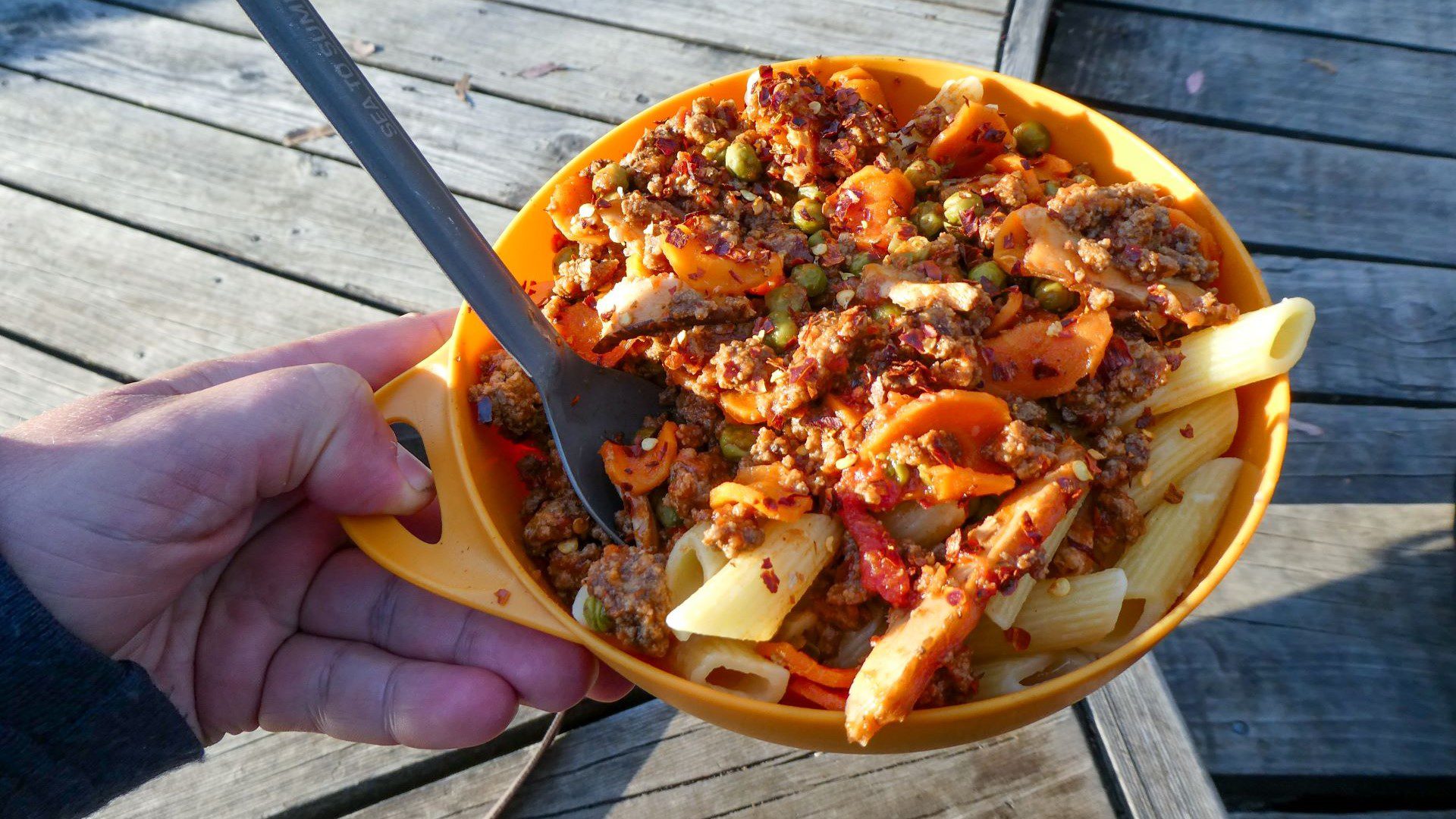
7. Bring plenty of hand sanitiser
Gastro is surprisingly common on the Overland Track, with the main culprit being taps and toilet door handles. While gastro is never fun, there are few worse places to come down with it than on a six-day trek. Use sanitiser before eating and after touching anything at the huts and campsite.
8. Take the chance to disconnect
It’s hard to disconnect nowadays, but there was no other option on this trek because there are no WhatsApp messages, news notifications or email alerts thanks to the lack of phone signal. Aside from the chirps and rattles of birds, water trickling down a creek and tree leaves rustling in the breeze, the Overland Track is completely undisturbed from the noise.
Our group enjoyed many chats along the trail, but we’d often walk in silence, with no sense of awkwardness or need to fill it with small talk. As each day passed, I eased into the rhythms of nature, taking time to admire the shapes of the mountains, run my fingers over button grass and feel the coolness of the forest air on my skin.
As we scrambled up rocks on Mt Ossa (Tassie’s tallest mountain), I felt my phone vibrate in my pocket. I was initially quite excited as it had been four days since I last spoke with my boyfriend, so I sent him a quick ‘Hello, I’m alive!’ message while I had the chance. But then I put it back in my pocket. It felt out of place. There I was, perched on a rocky ledge above the clouds with peaks peppering the horizon in every direction. I wanted to savour the moments I’d soon be craving again back at my desk in Melbourne.
9. Connect with your fellow trekkers
I love how the dynamic of an Intrepid group evolves as the days tick along. We were all a little reserved at first, but we soon came out of our shells and the banter was flowing. I don’t know if it was from tiredness, getting more comfortable with each other or the boost in imagination that comes from not having to think of to-do lists, but our conversations seemed to get sillier and sillier towards the end of the trip. The camaraderie had a wonderful ability to propel my feet forward when I felt like I couldn’t.
10. Enjoy the sense of achievement
Morale was high on our final day, partly because we knew a hot shower was just a few hours away and because the trail was mostly downhill. We strolled through a dense eucalypt forest where the morning light danced through the trees and birdsong filled the air before arriving at the famous suspension bridge over the Narcissus River.
We continued to walk – putting one foot in front of the other as we had done for the past six days – finally reaching the ferry that would take us to the official end of the Overland Track. Even with the icy wind whipping my face as we dashed across Lake St Clair, I couldn’t help but smile at the fuzzy feeling of accomplishment radiating through my body.
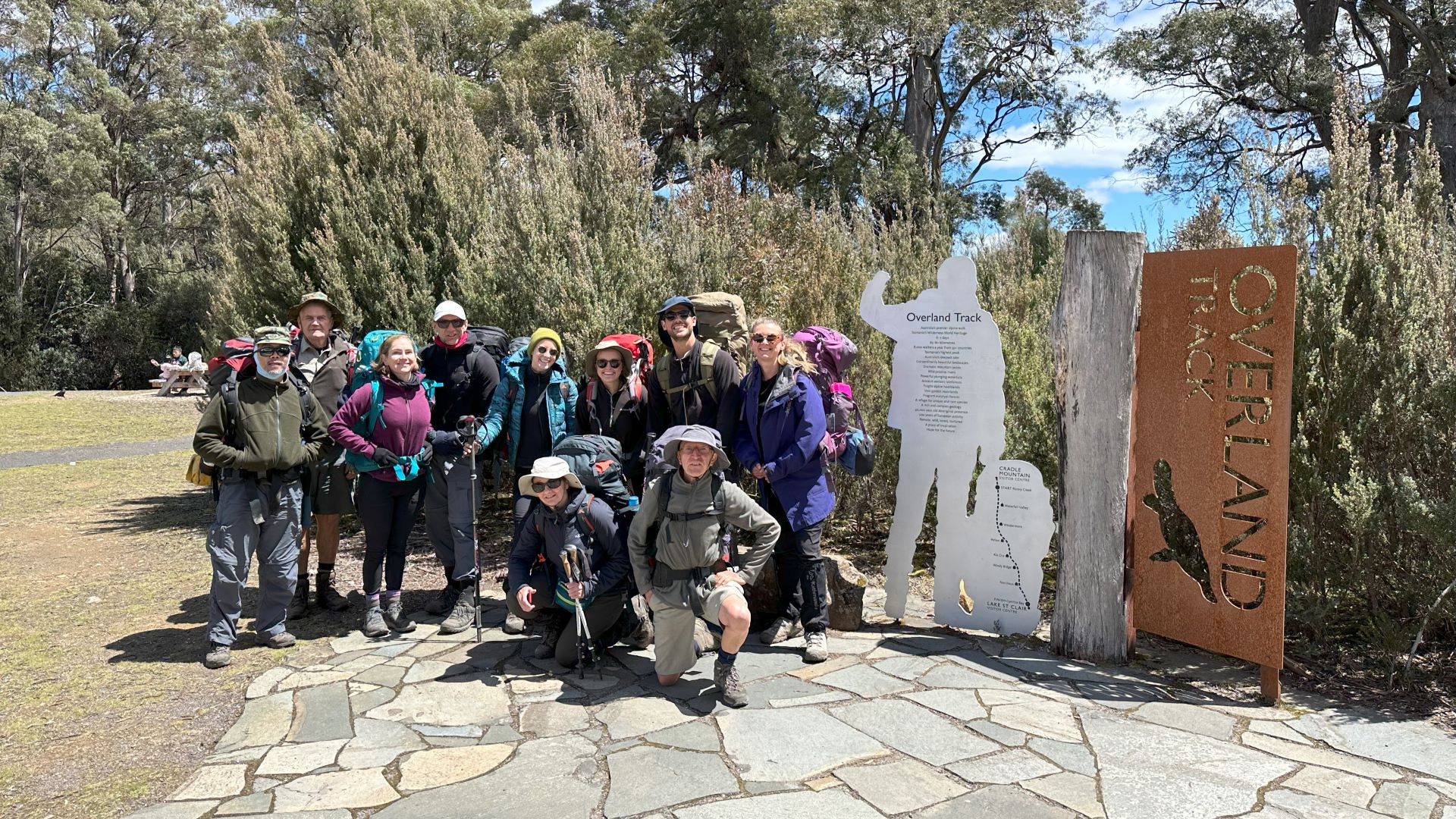
I now understand why the shop assistant asked me if I was emotionally ready for this journey. It was physically and mentally demanding, but it was also incredibly grounding to just walk and not have anywhere else to be. It was a reset for my nervous system.
Would it have been as much of a reset if I’d not been with Intrepid? Probably not. Being part of a group meant I could experience the thrill of trekking, but without the stress of booking permits (which often sell out months in advance), organising transport, cooking meals and keeping tabs on the weather.
Follow in Cliona’s footsteps on Intrepid’s six-day Cradle Mountain Overland Track.

